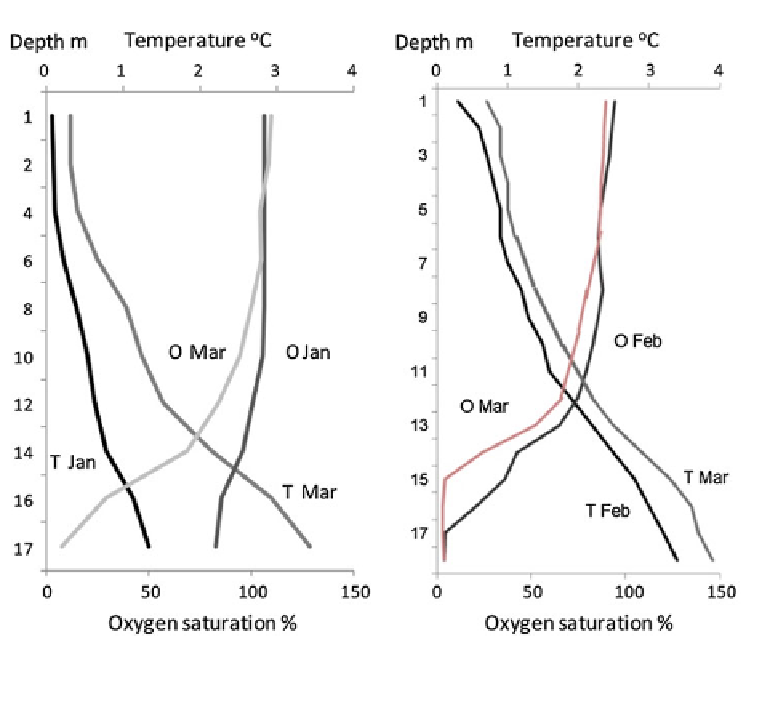Geoscience Reference
In-Depth Information
Fig. 7.17
Vertical distribution of water temperature (T) and oxygen saturation (O) in Lake
Vanajavesi, Southern Finland in January 26 and March 18, 2008 (left), and February 10 and March
25, 2009 (right) (Lepp
ä
ranta et al. 2012)
expected, are often equipped with an air pumping system to help their ecosystem to
survive over the winter.
When DO concentration is high, bacterial destruction of organic matter is accompanied
by extraction of carbon dioxide that is harmless to aquatic life. A decrease in the DO
concentration or complete absence of DO in the lower layer leads to negative ecological
consequences such as
fish winterkill, loss of benthic organisms, activation of anaerobic
processes with accumulation of dangerous compounds such as methane (CH
4
), hydrogen
sulphide (H
2
S) and ammonia (NH
3
) (Greenbank 1945; Barica and Mathias 1979). These
gases, in particular hydrogen sulphide, are toxic.
The most dangerous anaerobic conditions develop in small, shallow lakes with pro-
longed or extensive snow and ice cover, limited water in
ow, abundant aquatic macro-
phytes, and high primary productivity (Halsey 1968; Terzhevik et al. 2010). For example,
the anaerobic zone of about one meter thick is formed in the bottom layers of the deep part
of Lake Vendyurskoe, Russian Karelia every winter (Fig.
7.18
).
fl

Search WWH ::

Custom Search